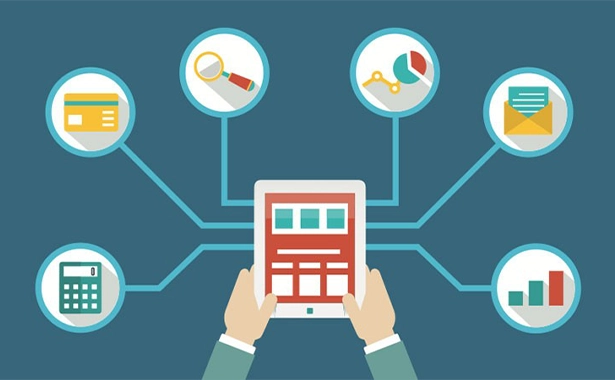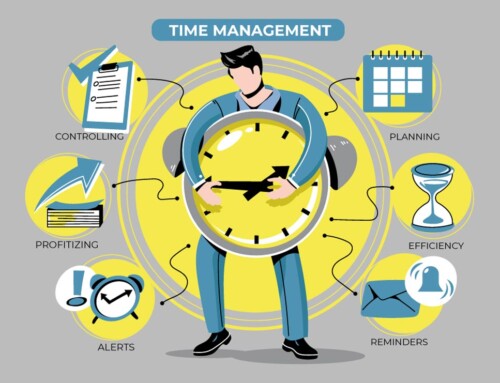Contents
Making an Attorney Billing Statement That Clients Understand
Legal services can be complex, but your billing doesn’t have to be. A clear, well-organized attorney billing statement not only fosters transparency but also builds trust with clients. It reduces billing disputes, speeds up payments, and enhances your professional image. Modern software solutions have simplified invoice management for lawyers by automating billing and tracking expenses. Accurate invoice management for lawyers reduces the risk of disputes and enhances client trust. In this guide, we’ll walk you through every step of creating a billing statement that clients actually understand — and appreciate.
What Is an Attorney Billing Statement?
An attorney billing statement is a detailed invoice that outlines the legal services provided, time spent on each task, associated fees, expenses incurred, and the total amount due. It helps clients understand what they are being charged for.
Why Invoice Management Is Essential for a Successful Law Practice?
Effective invoice management for lawyers and law firms is a powerful tool, not just for maintaining cash flow, but also for preventing disputes. It’s about more than just sending bills—it’s about setting clear expectations, building trust, and tracking billable hours accurately. By implementing a streamlined invoicing process, legal professionals can significantly reduce the risk of late payments, billing disputes, financial inefficiencies, and non-compliance with ethical or legal obligations. A well-organized approach to invoicing not only helps lawyers get paid on time but also fosters a practice free from misunderstandings and conflicts.
Why Clarity Matters in Legal Billing
Legal billing is more than just sending an invoice—it reflects a firm’s professionalism, transparency, and client-first mindset. In an industry built on trust, clarity in legal billing isn’t just important—it’s essential. Here are the ways that billing impacts your law firm, both positively and negatively.
1. Builds Client Trust
Clear, detailed invoices help clients understand exactly what they’re paying for. When legal services are broken down into understandable line items—whether for consultations, court appearances, or research—it eliminates confusion and builds confidence in the value being delivered.
2. Reduces Disputes
Ambiguous billing often leads to client pushback or delayed payments. With transparent billing, firms can reduce misunderstandings and avoid disputes that damage long-term relationships.
3. Supports Compliance and Ethics
Bar associations and legal oversight bodies often have strict guidelines regarding fee structures and billing practices. Clear, itemized billing supports ethical standards and ensures that firms comply with industry rules.
4. Improves Cash Flow
When clients clearly understand their invoices, they’re more likely to pay on time. This improves the firm’s cash flow and saves time spent on follow-ups or corrections.

5. Reflects Operational Efficiency
Accurate, straightforward billing reflects well-organized internal systems. It signals that the firm values detail, is technologically up-to-date, and respects the client’s need for transparency.
In today’s competitive legal landscape, clarity in billing isn’t just about getting paid—it’s about standing out as a modern, ethical, and client-focused firm. Effective invoice management for lawyers ensures timely payments and improved cash flow for the firm. Legal CRM and billing tools, like RunSensible, can help law firms streamline this process while maintaining complete transparency.
Key Components of a Clear Attorney Billing Statement
A clear attorney billing statement is essential for transparency, trust, and timely payment. It should be easy for clients to understand, detailed enough to justify charges, and professional in appearance. Here are the key components of a clear attorney billing statement:
1. Header Information
A clear attorney billing statement begins with essential header information. This includes the law firm’s name, logo, contact details, the client’s name, matter number, invoice number, and the dates the invoice was issued and is due. These elements ensure both the attorney and client are on the same page regarding which case the charges relate to and when payment is expected.
2. Summary of Charges
The billing statement should provide a summary of the charges upfront. This section outlines the previous balance (if any), payments or credits received, new charges incurred during the billing period, and the total amount due. A presented summary helps clients quickly grasp the overall financial status of their accounts.
3. Detailed Itemization of Services
Detailed itemization of legal services is crucial for transparency. Each line item should include the service’s date, a brief but precise description of the task (e.g., “Reviewed deposition transcript”), the time spent, the hourly rate, and the total fee. Clients are more likely to pay promptly when they can see exactly what they’re being charged for.
4. Expenses and Disbursements
Out-of-pocket expenses, or disbursements, should be itemized in a separate section. This includes costs such as court filing fees, travel, postage, and photocopying. Each expense should include the date, a short description, and the amount charged to ensure transparency and avoid billing disputes.
5. Payment Instructions
Payment instructions must be clearly stated to make the process easy for the client. This can include accepted payment methods such as credit card, bank transfer, check, mailing instructions, or a secure online payment link. Including this information up front helps reduce delays.
6. Trust Account Activity
If the client has funds held in trust, the billing statement should reflect trust account activity. This includes deposits made, any amounts withdrawn to cover fees or expenses, and the current trust balance. Keeping trust records accurate and up to date is not only professional but also a legal requirement in many jurisdictions.
7. Notes or Disclaimers
A good billing statement may also include additional notes or disclaimers. This might cover the firm’s late payment policy, a contact person for billing inquiries, or even a short thank-you message to the client. These small touches can enhance client satisfaction and promote a professional image.
Best Practices for Client-Friendly Billing
Billing statements are more than payment requests – they are a critical form of communication with your clients. Your invoice can be one of your most essential clients communications. For solo practitioners and small law firms, a well-crafted billing statement helps clients understand your work, see the value you provide, and trust that they are being billed fairly. Clear, accurate invoices reduce disputes and encourage prompt payment, improving your cash flow and client satisfaction.
A professional, easy-to-read layout is the foundation of a client-friendly billing statement. Organizing information clearly helps clients quickly understand their bill without confusion. Here are some best practices for formatting and layout:
- Use a clear, organized layout: Structure the invoice as an itemized table or list with distinct columns and sections. For example, include columns for the date of service, a brief description of the task, time spent, the billing rate, and the line total for each entry. Group related items under headings (e.g. Time Entries, Expenses, Taxes/Adjustments) so the reader can quickly scan each category.
- Include identifying details at the top: At minimum, ensure the top of the invoice clearly displays your law firm’s name/logo, contact information, and the client’s name and address. It’s also wise to include an Invoice # or reference number, the Invoice Date, and (if applicable) the Case/Matter identifier near the top for easy reference.
- Keep it uncluttered: Use legible font and adequate spacing. Avoid cramming too much text into one line or section. Each line item should ideally be a single task or service—this one-to-one approach (versus lumping many tasks into one block) improves readability and transparency. If a large task took many hours, consider breaking it into smaller sub-tasks on separate lines (instead of “block billing”) so the client can see the work progression.
- Highlight key figures: Ensure the invoice’s summary section (typically at the bottom or top-right) clearly shows the Subtotal, any Taxes or Adjustments, and the Total Amount Due. You might use bold text or a larger font for the Total Due so it stands out. Also, prominently indicate the Due Date near the total so it’s immediately apparent to the client.
- Provide payment instructions: In the layout, reserve a spot for payment terms and methods (often at the bottom). For instance, if paying by check, list the payable name and mailing address; if you accept online payments, include a URL or “Pay Now” link. Clear payment instructions in the layout make it easier for clients to remit payment without contacting you for details.
Paying attention to formatting and layout makes your bills visually digestible. A clean format minimizes client confusion and sets a professional tone from the moment they look at the statement.
Tools and Software to Simplify the Billing Process
Crafting clear and detailed invoices can be time-consuming if done manually, especially for a solo or small firm attorney juggling many responsibilities. Fortunately, there are tools and software solutions that can streamline the billing process and help ensure your statements are both professional and easy to understand.
Modern law practice management and billing software like RunSensible lets you quickly generate polished, customizable invoices. These tools typically allow you to input time entries and expenses as you go and then automatically compile them into an invoice. You can tailor the invoice template to your firm’s needs and the client’s requirements, ensuring it accurately reflects the services rendered and associated costs. The software will handle calculations for you (reducing math errors) and often includes features like trust accounting, LEDES billing formats (if needed for corporate clients), and one-click adding of standard line items. Dedicated legal billing software can save time and produce consistently formatted, easy-to-read statements.
One key to clear billing is accurate timekeeping. Utilize time-tracking tools or apps to record your work in real-time. Many legal billing programs have built-in timers that prompt you to track every billable minute and even allow multiple timers if you jump between tasks. There are also standalone time-tracking apps and browser extensions that can help. By capturing time as you work (rather than reconstructing it later), you ensure no task is overlooked on the invoice and that each entry has precise timestamps. This level of detail can bolster client trust – you can confidently answer how a 5-hour billable day was spent because you have the logs to back it up.
You can still improve your billing statements using professional invoice templates if you’re not ready to invest in specialized software. Many programs like FreshBooks or QuickBooks offer attorney-specific or customizable invoice templates, and resources are available online. At a minimum, use a template that includes all the essential elements discussed above and has a clean layout. Templates prevent you from having to start from scratch each time and help standardize your invoices. For example, a template might already have your firm header and logo and structured sections for descriptions, hours, rates, and totals. You can then fill in the blanks for each client/matter, ensuring consistency across all your bills.
Some advanced tools can analyze your billing patterns and client payments. While not directly part of creating a single billing statement, these analytics can inform your practices. For example, reports on aged receivables prompt you to adjust your billing frequency or remind slow-paying clients. Insight into which types of cases rack up a lot of write-downs or client disputes can help you refine how you describe those services in the invoice. These tools can indirectly lead to more client-friendly billing by identifying problem areas and successes.
With the right approach and tools, attorney billing statements can be comprehensive and easy for clients to understand. Remember that a bill is not just a request for money – it’s a narrative of your work and a reflection of your professionalism. Solo practitioners and small firms can significantly improve their invoicing process by following the best practices outlined in this guide – from clear layouts and essential details to plain-language descriptions and transparent communication. The result is a win-win: clients who feel informed and respected (and thus pay promptly and happily) and a law practice that enjoys better cash flow, fewer disputes, and a more substantial reputation for client service. Straightforward billing is one of the simplest ways to enhance client satisfaction, so it’s worth the effort to get it right.
Final Thoughts
At its core, legal billing is more than numbers on a page — it’s part of the client experience. A thoughtful, well-structured billing statement shows that you value transparency, professionalism, and your client’s trust. Whether you’re a solo practitioner or part of a growing firm, taking the time to create clear, client-friendly invoices can go a long way in strengthening relationships and ensuring smoother financial operations. To avoid disputes, always ensure the attorney billing statement is clear and itemized. Invoice management for lawyers can be a game changer, especially for solo practitioners juggling multiple roles.
The good news is you don’t need to reinvent the wheel. With the right tools, templates, and mindset, you can turn every invoice into a reflection of your commitment to quality service. From itemized details to clear payment instructions, it all adds up to a better experience for everyone involved. In a competitive legal landscape, that kind of clarity doesn’t just get you paid — it sets you apart.
Optimize Your Law Firm’s Finances with Smart Solutions
Managing a law firm’s finances requires precision, compliance, and efficiency. With legal accounting software designed for law firms, you can easily automate invoicing, track expenses, and generate accurate financial reports. RunSensible enhances law firm financial management by streamlining trust accounting, tax preparation, and billing processes—all within a single platform.
Leverage automation RunsenSible to ensure seamless cash flow management for law firms. RunSesnible monitors revenue, forecasts financial needs, and prevents liquidity issues. Stay ahead of regulatory requirements with built-in compliance features that simplify maintaining compliance in trust accounting, prevent errors, and ensure accurate reconciliation. With an all-in-one legal practice management solution, your firm can improve financial accuracy, boost productivity, and focus on delivering exceptional legal services.
FAQ
1. How often should clients receive billing statements?
Typically, law firms send billing statements monthly, but this can vary depending on the retainer agreement or client preference.
2. How can I handle unexpected charges on the statement?
Briefly explain any unusual or unexpected charges directly in the invoice or as an attachment. Communication helps avoid billing disputes.
3. What should I do if a client disputes a charge?
Listen to the client’s concerns, review the billing statement, and offer clarification or adjustments if needed. A professional and transparent approach can resolve most issues quickly.
References
1. https://www.ncbar.org/showing-value-in-billing-descriptions/
3.https://natlawreview.com/article/law-firm-billing-how-motivate-timely-and-full-client-payments
Disclaimer: The content provided on this blog is for informational purposes only and does not constitute legal, financial, or professional advice.







